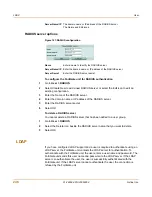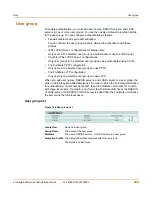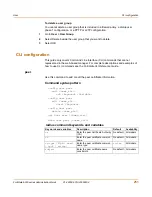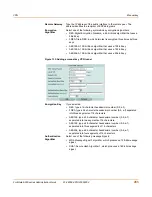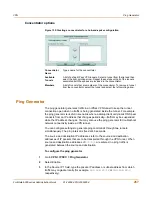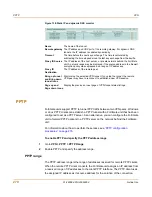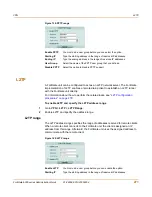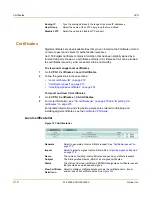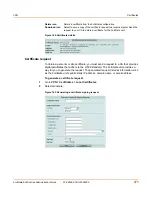
260
01-28008-0013-20050204
Fortinet Inc.
Phase 2
VPN
Phase 2
You configure phase 2 settings to specify the parameters for creating and maintaining
a VPN tunnel between the FortiGate unit and the remote peer or client. In most cases,
you only need to configure the basic phase 2 settings.
To configure phase 2 settings
1
Go to
VPN > IPSEC > Phase 2
.
2
Follow the general guidelines in these sections:
•
“Phase 2 list” on page 261
•
“Phase 2 basic settings” on page 261
•
“Phase 2 advanced options” on page 262
For information about how to choose the correct phase 2 settings for your particular
situation, refer to the
FortiGate VPN Guide
.
Keylife
Type the amount of time (in seconds) that will be allowed to pass before the
IKE encryption key expires. When the key expires, a new key is generated
without interrupting service. The keylife can be from 120 to 172800 seconds.
Local ID
If you are using peer IDs for authentication, enter the peer ID that the local
FortiGate unit will use to authenticate itself to remote VPN peers.
If you are using certificates for authentication, select the distinguished name
(DN) of the local certificate.
XAuth
If you select Enable as Client, type the user name and password that the
FortiGate unit will need to authenticate itself to the remote peer.
To select Enable as Server, you must first create user groups to identify the
remote peers and dialup clients that need access to the network behind the
FortiGate unit. You must also configure the FortiGate unit to forward
authentication requests to an external RADIUS or LDAP authentication
server. For information about these topics, see the “Users and Authentication”
chapter of the
FortiGate Administration Guide
. Select a Server Type setting to
determine the type of encryption method to use between the FortiGate unit,
the XAuth client and the external authentication server, and then select the
user group from the User Group list.
Nat-traversal
Enable this option if a NAT device exists between the local FortiGate unit and
the VPN peer or client. The local FortiGate unit and the VPN peer or client
must have the same NAT traversal setting (both selected or both cleared).
Keepalive
Frequency
If you enabled NAT traversal, enter a keepalive frequency setting. The value
represents an interval from 0 to 900 seconds.
Dead Peer
Detection
Enable this option to reestablish VPN tunnels on idle connections and clean
up dead IKE peers if required.
Note:
The procedures in this section assume that you want the FortiGate unit to generate
unique IPSec encryption and authentication keys automatically. In situations where a remote
VPN peer requires a specific IPSec encryption and/or authentication key, you must configure
the FortiGate unit to use manual keys instead. For more information, see
“Manual key” on
page 263
.
Содержание FortiGate FortiGate-5020
Страница 86: ...86 01 28008 0013 20050204 Fortinet Inc Dynamic IP System DHCP ...
Страница 118: ...118 01 28008 0013 20050204 Fortinet Inc FortiManager System Config ...
Страница 254: ...254 01 28008 0013 20050204 Fortinet Inc CLI configuration User ...
Страница 318: ...318 01 28008 0013 20050204 Fortinet Inc CLI configuration Antivirus ...
Страница 350: ...350 01 28008 0013 20050204 Fortinet Inc Using Perl regular expressions Spam filter ...
Страница 370: ...370 01 28008 0013 20050204 Fortinet Inc CLI configuration Log Report ...
Страница 382: ...382 01 28008 0013 20050204 Fortinet Inc Glossary ...
Страница 402: ...402 01 28008 0013 20050204 Fortinet Inc Index ...

